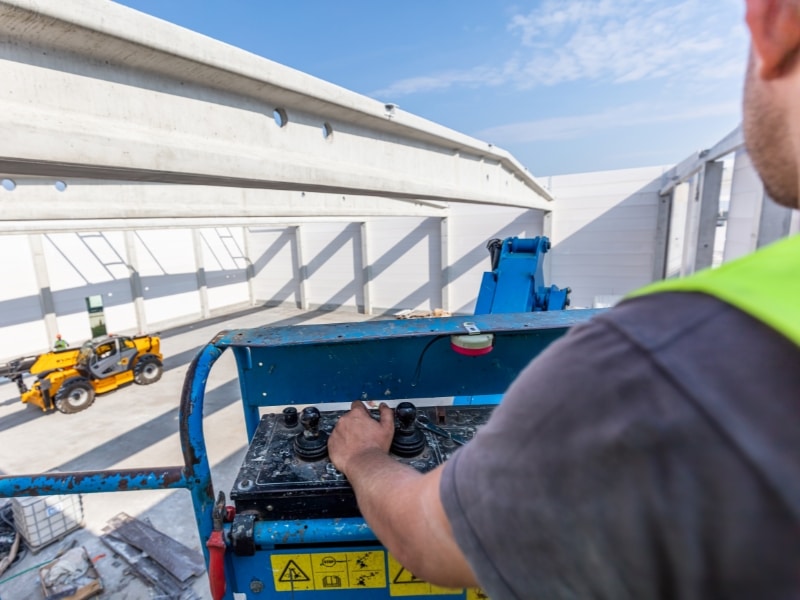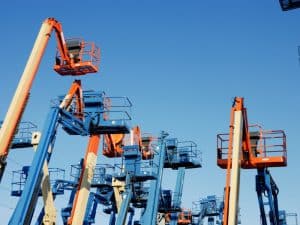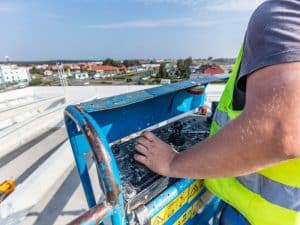EWP (Elevated Work Platform) operators face a variety of hazards on construction sites, which can put both their safety and the safety of others at risk. As an EWP operator, you’re responsible for ensuring you’re well-prepared to handle potential dangers while operating machinery at heights. Understanding the hazards, assessing risks, and implementing safety measures is key to working safely. This article explores the common hazards, how to manage them, and why proper training is key to staying safe.
Why are EWP operators at greater risk than other workers?
EWP operators often face unique risks that other workers on construction sites may not encounter. Their work at elevated heights, combined with heavy machinery, presents specific dangers requiring close safety attention.
Some key reasons why EWP operators are at greater risk include:
- Working at heights: The risk of falls increases significantly when operating machinery above ground level.
- Mechanical failures: If the EWP malfunctions, it can lead to serious accidents, including falls or loss of control.
- Weather conditions: Wind, rain, and extreme temperatures can impact the stability of the EWP, making it harder to operate safely.
- Limited visibility: EWP operators may struggle with visibility from elevated positions, increasing the likelihood of collisions or accidents.
- Unstable surfaces: Construction sites often have uneven or unstable ground, which can affect the stability of the EWP.
Understanding these risks is the first step in ensuring the safety of EWP operators on construction sites.
What are the most common hazards for EWP operators?
Environmental, mechanical, and human factors are among the most common hazards EWP operators face. Awareness of these hazards can help operators take the necessary precautions to minimise risk.
Some of the most common hazards for EWP operators include:
| Hazard | Cause | Risk |
| Falls from height | Unsafe platform, lack of fall protection | Serious injury or death |
| Collisions with machinery | Loss of control, obstacles | Equipment damage, injuries |
| Electrical hazards | Contact with power lines | Electrocution |
| Mechanical failure | Hydraulic malfunction, broken parts | Platform instability, accidents |
| Overloading the platform | Exceeding the weight limit | Loss of stability, tipping |
Awareness of these hazards helps the operator recognise potential issues and take appropriate action to mitigate them.
Why is site hazard assessment important for EWP operators?
A thorough risk assessment for elevated work platforms is crucial for ensuring the safety of EWP operators on construction sites. Before operating an EWP, assessing the site for potential hazards and planning accordingly to minimise any risks is essential.
The importance of site hazard assessment includes:
- Surface inspection: Always check for soft ground, slopes, or holes that might affect EWP stability.
- Environmental conditions: Before starting, identify any wind risks, overhead obstructions, or poor lighting.
- Restricted zones: Be aware of confined areas or hazardous materials that could impact your operation.
- Load limitations: Know your EWP’s maximum weight, including tools and personnel.
- Ground traffic: Watch for forklifts, trucks, or other moving machinery colliding with your equipment.
By conducting a proper site assessment, EWP operators can identify risks before they become problems, making their work environment safer.
Which safety measures should EWP operators always implement?
EWP operators must consistently implement specific safety measures while working on construction sites to reduce the risk of accidents and ensure worker safety when performing tasks at elevated levels.
Key safety measures include:
- Use of fall protection equipment: To prevent falls, always wear fall arrest harnesses and secure yourself to the platform.
- Inspecting the equipment: Regularly inspect the EWP to ensure it functions correctly.
- Maintaining clear communication: Ensure you communicate with ground staff, especially when working at height.
- Stabilising the platform: Always ensure the EWP is positioned on stable ground and use outriggers where necessary.
- Adhering to load limits: Never exceed the weight capacity of the platform to avoid instability or tipping.
Following these safety measures will significantly reduce the risk of injury and help keep you safe while operating an EWP on a construction site.
How can EWP operators reduce the risk of hazards?
EWP operators should adopt proactive measures that focus on preventive and responsive tactics to minimise the risk of hazards.
Here are several ways operators can reduce the risk of hazards:
- Ensure thorough training: Completing accredited EWP operator training ensures you know how to operate the equipment safely.
- Conduct regular inspections: Before each use, check the condition of the EWP and its components.
- Follow safety protocols: Adhere to all site-specific safety protocols, including using fall protection systems and securing the platform.
- Monitor weather conditions: Stay informed about weather conditions that may affect the stability of the EWP.
- Stay alert and focused: Keep distractions to a minimum and pay full attention to your tasks.
These measures help operators maintain high safety on the job and reduce the risk of accidents.
Is EWP certification required to ensure operator safety?
Yes, EWP certification is crucial for ensuring operator safety. Without the proper certification, operators may not have the necessary skills to handle the equipment safely, which can increase risks on construction sites. Understanding the benefits of EWP certification for workplace safety can help mitigate these dangers and promote a safer working environment.
Key reasons why certification is essential include:
- Compliance with regulations: Many construction sites require operators to be certified to comply with workplace safety laws and regulations.
- Improved safety knowledge: EWP certification courses teach operators about safety protocols, emergency procedures, and equipment maintenance.
- Boosting career opportunities: Being certified enhances your employability and demonstrates your expertise in EWP operation.
- Reducing the risk of accidents: Certified operators are more likely to operate safely, reducing the chances of injury or equipment damage.
Ensuring you are certified in EWP operation is crucial to improving safety and meeting industry standards.
Why is proper EWP training essential for safety?
Proper EWP training is vital for ensuring that operators can perform their duties safely and effectively. Without the appropriate training, operators may not fully understand the risks of working at height or using heavy machinery, which can lead to accidents.
Benefits of proper EWP training include:
- Skill development: Training helps operators develop the skills to operate EWPs correctly, avoiding common mistakes.
- Risk awareness: Through training, operators understand potential hazards and how to manage them.
- Emergency preparedness: Training prepares operators to respond effectively to emergencies, such as equipment failure or falls.
- Compliance with safety regulations: Completing an accredited training course ensures compliance with workplace safety laws and regulations.
Proper EWP training can significantly improve safety and ensure operators are well-prepared. Exploring comprehensive EWP under 11m training courses is a practical first step toward gaining the right skills and confidence.
Conclusion
EWP operators face a range of hazards on construction sites. Still, they can reduce their risk of injury by understanding the risks, conducting proper site assessments, implementing safety measures, and completing accredited training. Always ensure you’re certified and equipped with the skills to operate an EWP safely.
For a reliable and comprehensive safety training course, get in touch with SafeZone Training for more information.



